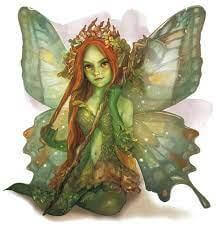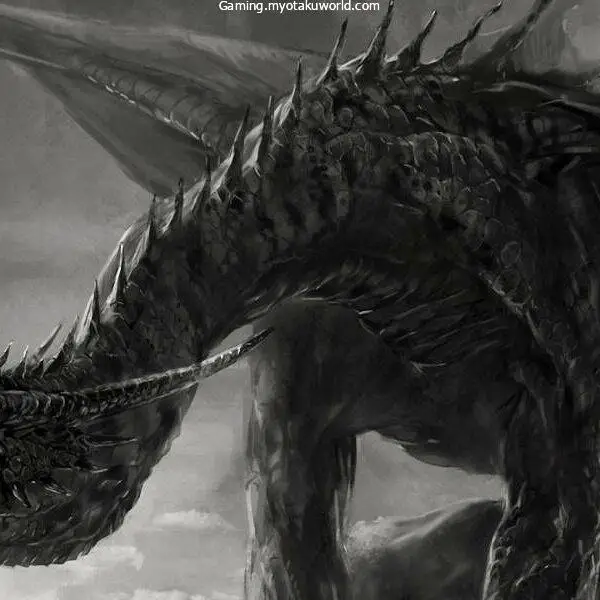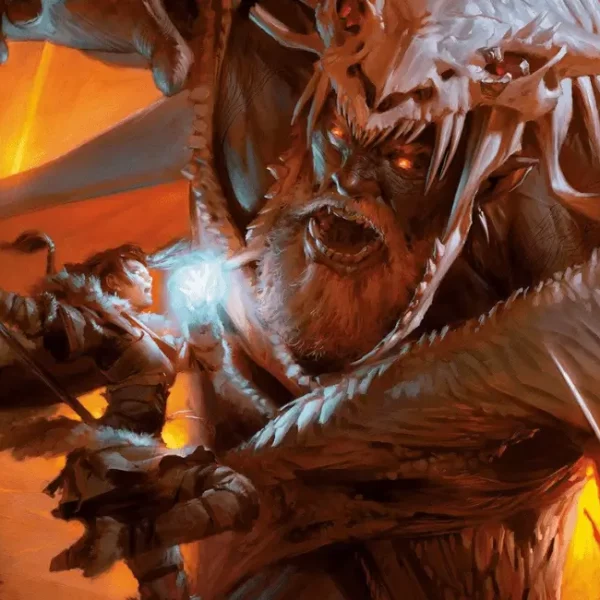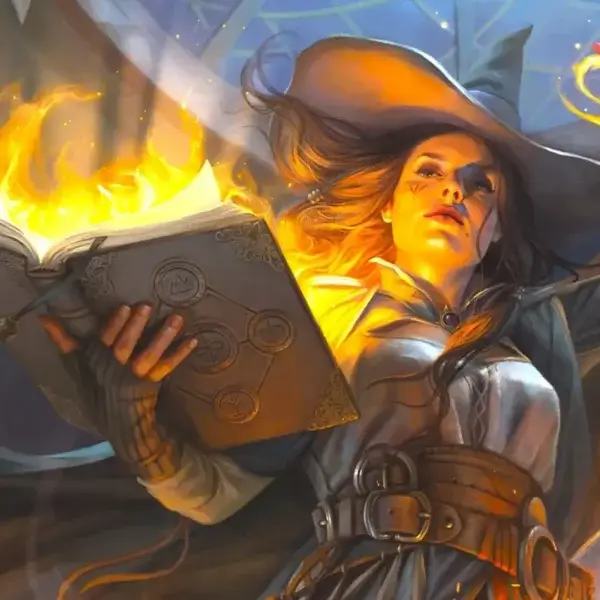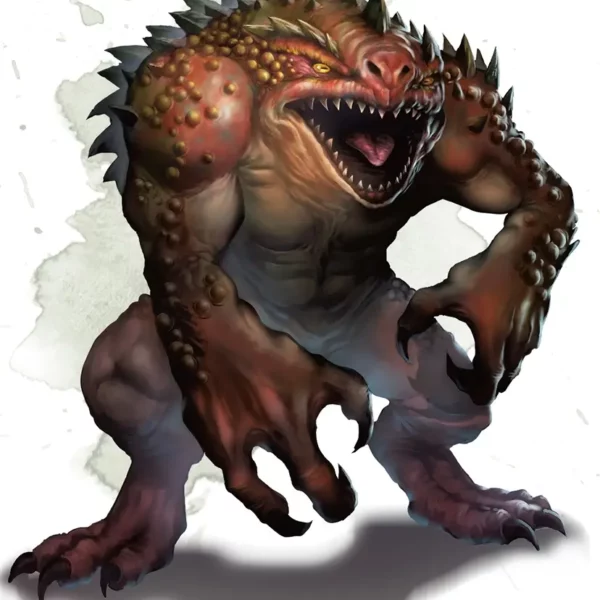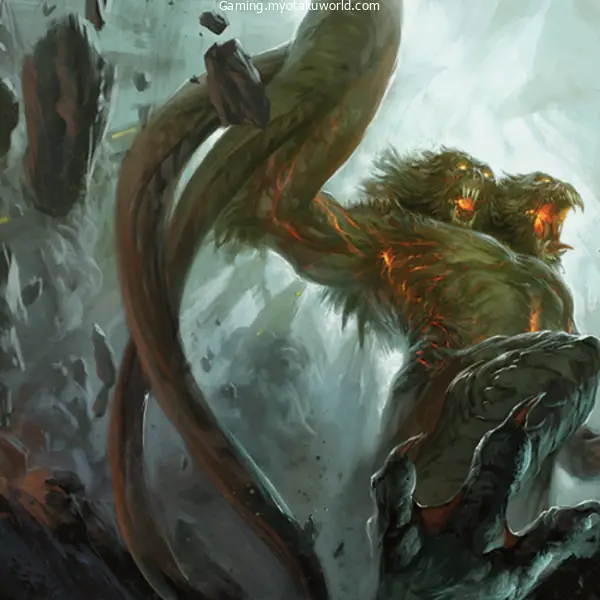The Feywild symbolizes nature’s strength in its wildness and beauty, as well as its chaos and untrustworthy dangers.
People living in Faerie’s Plane of Faerie can be equally impressive. Even the weakest of them could cause dimension-wide fractures.
The most powerful gather wisdom and power throughout their lifetimes and never share any of it to get it for free.
The creatures of the Feywild are a great way to create amazing D&D adventures. The players are given the possibility of exploring their ancestral home in the Wild Beyond the Witchlight adventure.
The Wild Beyond the Witchlight Adventure To provide your players with an experience of The Plane of Faerie, check out our most loved Fey here:
- Boggles
- Hags
- Quicklings
- Pixies
1. Boggles

Boggles appear as grey or blue-colored mutant humanoids that have huge heads and skin that oozes.
With a rating of one-eighth, they do not present a significant danger in a head-on battle, but they can sabotage even the most advanced of parties for a pursuit scene. They aren’t easy to capture.
Catch Me if You Can
The most notable feature of the boggle is the Dimensional Rift, which allows it to utilize an extra action to make an entrance to any space in the 30-foot range.
Only the boggle can traverse the portal. However, they can carry objects with them.
This lets them get away quickly or keep items like an item in a quest away from the reach of the party.
Even with no Dimensional Rift, boggles are equipped with the following bonuses that allow them to remain unnoticed: Sleight of Hand +6, Stealth +6.
Furthermore, boggles can rise faster than most characters can sprint (30 inches) and also in a sloping manner and on hard surfaces without having to performability checks.
The Creatures Are Slippery (or slippery) Creatures
Boggles may release sticky or slippery oil, with each having its applications. The first type gives them an advantage in dexterity (acrobatics) checks, allowing them to better squeeze through tight spaces and avoid bonds and grapples.
The puddle has been there for a long time and forces the characters of the game to make the DC 11 Dexterity saving check or fall into a prone position.
Boggles’ oil is sticky and grants them an advantage on strength (athletics) checks that allow them to grasp or hold on to the surface or object.
A puddle of oil requires players to make a DC 11 Strength saving throw or be held in check.
Utilizing boggles to play
The boggle can be used by Dungeon Masters to create a fun and exciting side story or to introduce the players to the larger plot elements.
Boggles could be able to steal something from the party because of their desire to make a mess and then lead them on a slick chase through a bustling city.
Boggles might engage in a hilarious game of keep-away, generating Dimensional Rifts that allow them to pass around an item that was stolen between them and fill narrow passageways by slipping oil.
For example, the faction or crime syndicate or even a hag coven or as unstable allies, Boggles can be beneficial to more powerful entities.
Remember that boggles are usually unstable neutrals, and so they tend to put their interests before their interests.
They are swindlers, and therefore would rather be annoying to others than try to take them out. Also see: 15 D&D Warlock Spells Every Player Should Know
2. Hags

Hags, who are mistresses of malice, play with primordial fears and desire the ill-luck of others.
The type of anxiety they seek to bring forth is dependent on the kind of woman:
- Annis Hags make their home in the ruins. Anis Hags delight in spreading terror.
- Bheur hag: The hags are regal mistresses of winter and inspire self-indulgence.
- Hags of dusk: This kind of hag may share prophetic visions, but at a cost. However, this information is likely to cause the abyss rather than good luck.
- Living in swamps, forests, and moors, green hyenas delight in turning hopes into despair.
- Night Hags, once a part of life that lived in the Feywild, were banished into Hades. These creatures sabotage everything good and turn the love of a person into an obsession, and generosity into self-interest.
- Sea Hag The hags are looking to pollute and turn ugly.
If the look on your face could cause death,
Hags can shine and glow during combat. Sea hags’ Death Glare is a terrifying weapon against adventurers with low levels.
It requires the terrified animal to make a DC 11 Wisdom saving throw or lose all hit points on the spot.
For certain hags, however, just a hug is the only thing you need to get away from even the most ardent of adventurers.
The Crushing Hug of the Annis Hag can entrap a player character and then automatically deal damage at the beginning of every turn of the hag.
Night hags, however, are the most powerful when they are conscious of their enemies.
They can be able to enter the ethereal plane and cause nightmares to creatures, decreasing the maximum number of hit points they can achieve and denying them any benefits from a lengthy rest.
Making use of hags in your game
A D&D group could encounter hags while searching for missing babies, or when they discover the town has been divided by false allegations, gossip, and even nightmares.
A single Green Hag, as well as a sea hag, could be the main antagonist in a 1st and 2nd level adventure.
The current set of hags is rated at a 77% challenge score. A coven with three hags significantly enhances the difficulty of a challenge (see “Hag Covens” below).
Hag Covens
If hags have to cooperate, they form covens despite their individualistic natures. A coven is comprised of women of all kinds, and all of them are equally matched within the coven.
But every one of them is always seeking more power for their ends.
A coven is comprised of three hags so that any disputes between two hags are resolved with the help of the third.
If more than three covens get together, which could occur when two covens enter a standoff, it is usually chaos.
shared spellcasting While all three members of a hag coven live just 30 meters from each other, they may each perform the following spells from the wizard’s spell list, but have to divide the spell slots among them:
1. (4 slots): identify a sickness ray
2. (3 slots): hold person, find an object
3. (3 slots): bestow curse, counterspell, lightning bolt.
4. (3 slots): phantasmal killer, polymorph
5. (2 slots): make contact with another plane and scry
6. (1 slot): website.
To cast these spells, the hags are level 12 spellcasters who use intelligence to cast spells as a capability.
This spell’s DC is 12 plus an increase in the Hag’s Intelligence, and the bonus to attack is 4 plus the hag’s Intelligence modifier. Monster Manual is the source.
Covens have a significant influence over the general population within their respective areas, whether it is because of fear of or misplaced confidence.
Any group that is honest about their plans to dismantle the coven may be deported or confronted with the fact that non-players will join in the defense of the coven, for example, by acting as a humanoid defense.
To this end, the process of removing a coven can bring moral dilemmas and politics.
As well as forming covens and covens, they are also known to take on other creatures.
(Even Baba Yaga has been known to have raised Tasha, the creator of Tasha’s Cauldron of Everything.)
These creatures can serve as opponents of a lower level, which can lead to a fight between the group and the hulk, or help to keep the party from engaging.
3. Quicklings

Rapid and agile, quick links live in the spirit of their name, sporting the astounding speed of 120 feet and rogue-like skills.
Quick links look like tiny, wild elves with high-pitched voices. They’re the creatures of the court of the unseen as they are the creation of Queen Air and Darkness herself, although they may not be as quick to express their gratitude to her.
They were once lazy and self-centered fey that were frequently delayed in responding to their queen’s call.
Therefore, she punished them by shrinking their size and increasing the internal clocks of their bodies. Quick links typically live only 15 years.
It is the most difficult to identify, but it is also the most difficult to hit.
With a high speed of movement and huge bonuses in Sleight of Hand and Stealth, Quicklings are fools that are as difficult to deter as the bobble.
Lower-level adventurers who fight quickly will most likely have to fight to get a punch on these elusive creatures.
Quicklings are equipped with an AC of 16, which means that attacks on them are usually constructed using disadvantage.
Also, they are equipped with evasion, which lets them stay clear of the damage caused by spells like “burning hands.”
Use quicklings to play
A party may encounter an army of quick links posing as bounty hunters, highwaymen, assassins of the political, the sworn servants of the fey noble.
They can be a scourge and disrupt their rest until the group defeats them or they can appease them.
Quicklings are designed to aid in ambush strategies. Because of their speed, a quickling could create three dagger attacks in just one action.
Since they possess dark vision, they could be extremely risky in nighttime battles against other members of the party who might be unable to see them.
To take them down, you must be smart, employing grapples, checkpoints, or clever traps.
Once they are caught, it won’t take much damage to bring off an elusive quickly.
They are only able to hit 10 points.
While they are a bit of a nuisance, swift lines are for a group of adventurers, but they are also an asset. Players can hire quick links to annoy the enemy or act as couriers or scouts.
These creatures are motivated by the opportunity to cause chaos or fight back against their queen, Air, or the Queen of Darkness.
4. Pixies

A well-known fairy, pixies, appear as tiny elves with delicate wings. They’re as fascinating as they are timid. A dusting could grant flight to friends, or even make enemies look like fools.
Mages are frequently scoured by pixies to find their dust, even though the pixies are unlikely to be visible.
Pixies love to test people who have entered their property by playing tricks on them, for example, by releasing buckles or tying shoe strings.
If the intruders are friendly to such tricks, a few dozen princesses could wear flower crowns and come together to greet each other, hoping to make friends. If the intruders are aggressive, they won’t likely appear.
Tricky tricksters with a delicate touch
A pixie has a hefty one-hit point. Their inherent power to disappear, their 15 AC, and their choice of spells make them tough to capture.
Of course, pixies are social creatures that live in groups, and so bringing an ax to one pixie can result in being attacked by several dozen other pixies.
Make use of pixies in your games.
The adventurers who go towards the Feywild might stumble across the pixie’s glade while seeking out a suitable spot to rest for a while.
In the glade, they may be able to hear the laughter of these gentle creatures and may play innocent pranks on them.
If the group shows they’re funny or humourous, the pixies may appear and are more than happy to help.
The party members may also come upon a pixie helping an animal that is injured by hosting a tiny ball of faeries or serving as a messenger at one of the faerie courts.
Being the kind and enthusiastic creatures they are, pixies can become more of an irritation than a threat.
If characters in the game attempt to track down pixies in search of their dust, they’ll encounter pixies that are difficult to find, particularly those who aren’t able to sea creatures.
Pixies can use entanglement to slow down the speed of hunters and create confusion to make others wander off in an unplanned direction or strike their weapon towards any ally.
A pixie could even entice characters to climb an incline only to fall asleep as they near the top.
However, it is important to be considerate of the kids in the woods.
The Wild Beyond the Witchlight is the next major adventure in D&D and is available now for preorder from D&D Beyond!
It brings the fun and zany adventure that is Feywild to the fifth edition of the game to the world for the first time.
It introduces new character mechanics, monsters, and story hooks for players of all ages and levels!
Through their campaigns, master-tier players can also share their compendiums and book content with their friends!
